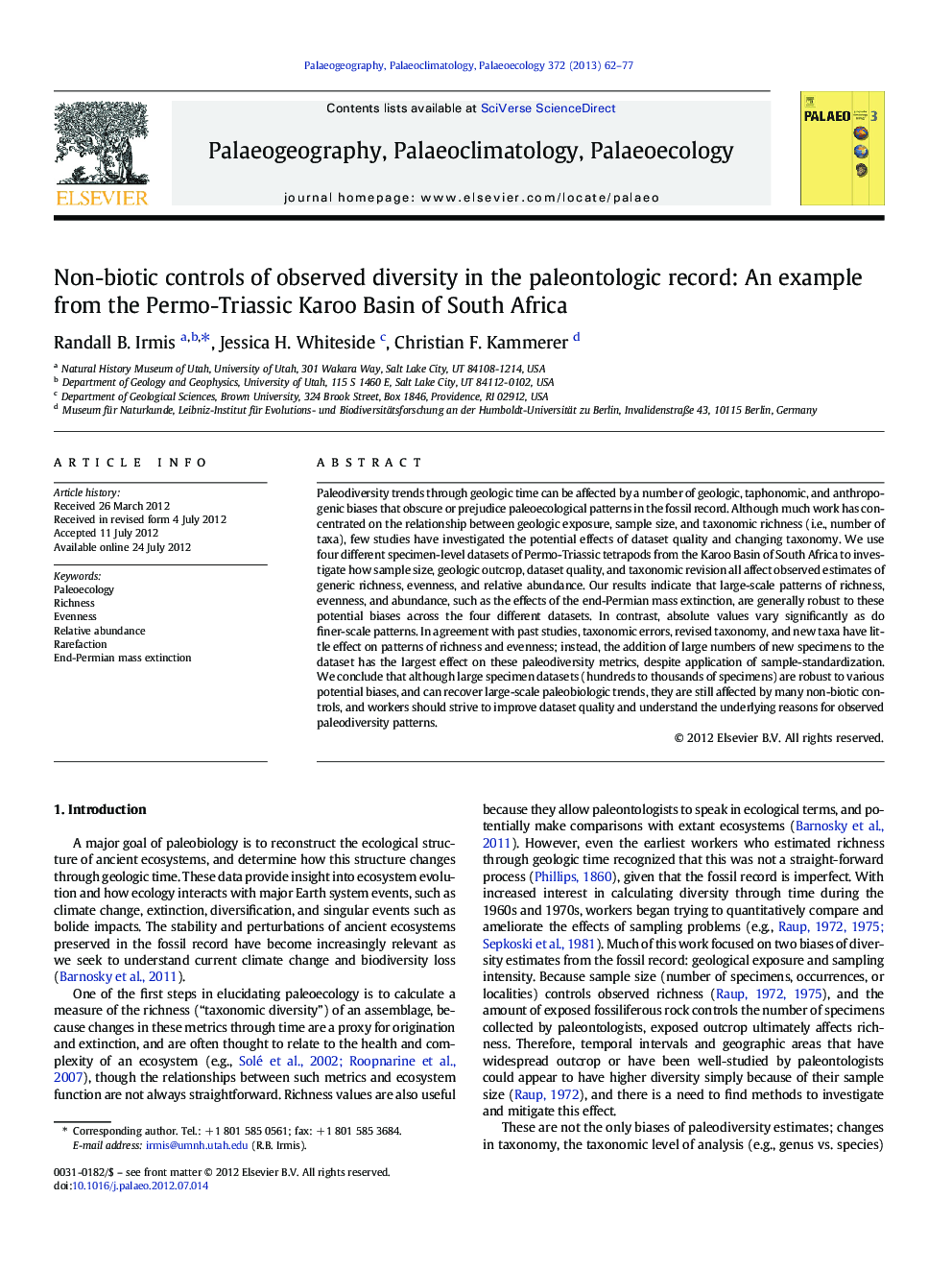| کد مقاله | کد نشریه | سال انتشار | مقاله انگلیسی | نسخه تمام متن |
|---|---|---|---|---|
| 4466626 | 1622214 | 2013 | 16 صفحه PDF | دانلود رایگان |

Paleodiversity trends through geologic time can be affected by a number of geologic, taphonomic, and anthropogenic biases that obscure or prejudice paleoecological patterns in the fossil record. Although much work has concentrated on the relationship between geologic exposure, sample size, and taxonomic richness (i.e., number of taxa), few studies have investigated the potential effects of dataset quality and changing taxonomy. We use four different specimen-level datasets of Permo-Triassic tetrapods from the Karoo Basin of South Africa to investigate how sample size, geologic outcrop, dataset quality, and taxonomic revision all affect observed estimates of generic richness, evenness, and relative abundance. Our results indicate that large-scale patterns of richness, evenness, and abundance, such as the effects of the end-Permian mass extinction, are generally robust to these potential biases across the four different datasets. In contrast, absolute values vary significantly as do finer-scale patterns. In agreement with past studies, taxonomic errors, revised taxonomy, and new taxa have little effect on patterns of richness and evenness; instead, the addition of large numbers of new specimens to the dataset has the largest effect on these paleodiversity metrics, despite application of sample-standardization. We conclude that although large specimen datasets (hundreds to thousands of specimens) are robust to various potential biases, and can recover large-scale paleobiologic trends, they are still affected by many non-biotic controls, and workers should strive to improve dataset quality and understand the underlying reasons for observed paleodiversity patterns.
► We investigate geologic and taxonomic biases of paleodiversity using specimen data.
► Tetrapod richness, evenness, & relative abundance affected by end-Permian extinction.
► Large-scale diversity trends are robust to outcrop area and changes in taxonomy.
► Addition of many new specimens affects data more than new taxa.
► Absolute values and finer-scale patterns sensitive to dataset quality and taxonomy.
Journal: Palaeogeography, Palaeoclimatology, Palaeoecology - Volume 372, 15 February 2013, Pages 62–77